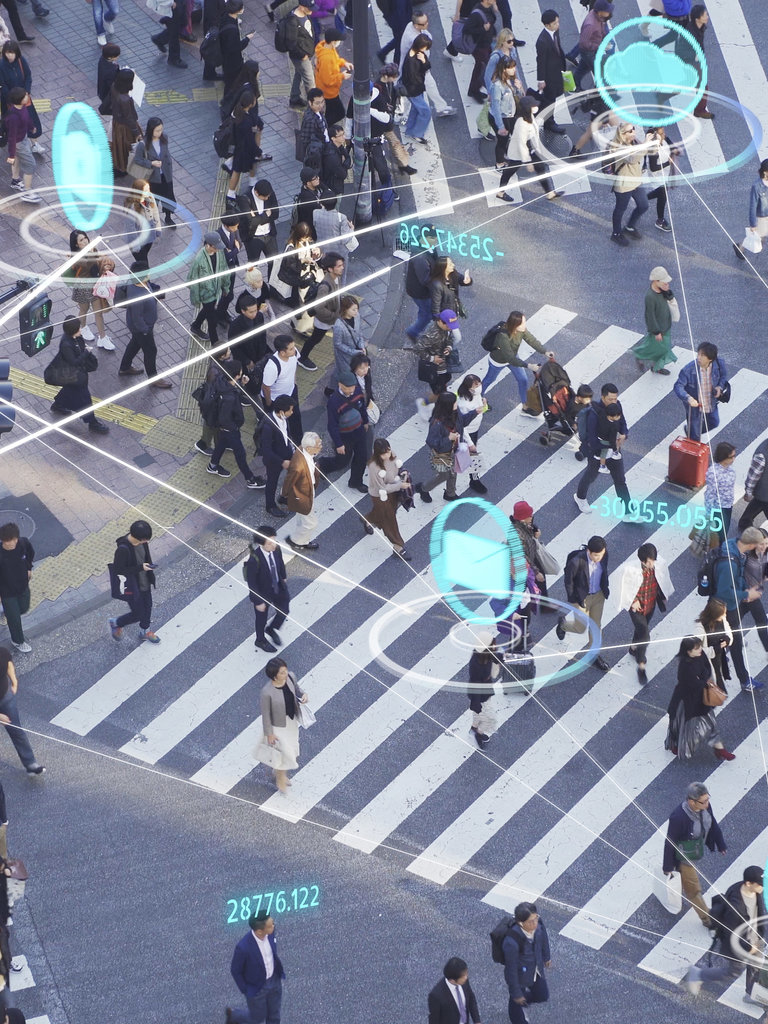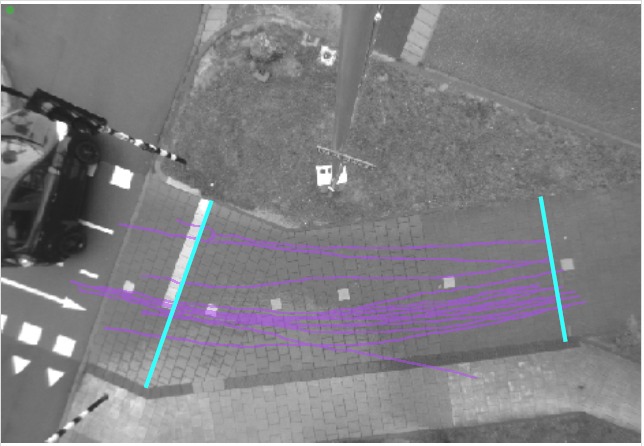
Applying TU Delft research in the fight against coronavirus
Interview with prof. Deborah Nas
Currently, the whole world is facing the huge challenge of overcoming coronavirus. How will we shape our social distancing society? What changes will there be in our travel behaviour? What is people’s perception of crowdedness and when do people feel safe? How can we influence behaviour in order to minimise the spread of the virus? There are many other questions that still remain unanswered. On our campus, the academic year has also begun, albeit in a highly modified form, with all kinds of measures in place. Led by Prof. Deborah Nas, four projects will be putting our research to good use in exploring these issues, starting on our own campus. The results are delivering new scientific insights while also providing concrete guidance for policy in the Netherlands and beyond.
“During the first phase of the coronavirus crisis, the research at TU Delft aimed at combating the virus had a primarily medical focus. There was a looming shortage of IC beds and ventilators, and medical PPE was in short supply,” explains Deborah Nas, Professor of Strategic Design for Technology-based Innovation at the Faculty of Industrial Design Engineering (IDE). “During this phase, TU Delft played a valuable role with projects aimed at equipment and products. We have now reached a new phase: how do we all learn to live with a situation that requires us to practice social distancing? TU Delft can play a role in this too, because digital technology is set to be a key factor.”
We have now reached a new phase: how do we all learn to live with a situation that requires us to practice social distancing?
As far back as April, the Ministry of Health, Welfare and Sport organised market consultations about digital solutions needed in the transition phase. “Initially, there were four questions to be considered, but the development of a contact-tracing app soon monopolised everyone’s attention. Those other questions, the ones in which TU Delft wanted to play a role, faded into the background,” says Nas.
Yet the intrinsic motivation to contribute to the struggle was still felt just as strongly by academics: “We asked ourselves how we could use our specific knowledge for the common good. We discussed this and came to the conclusion that our added value was the fact that we are researchers as well as engineers – not only do we think; we’re also driven to do. This gave us the idea of using the campus as a living lab for digital technologies to support the social distancing society.”
Within the four projects, researchers from CEG, EEMCS, TPM, IDE and Architecture and the Built Environment are working together. Although the projects appear at first glance to be separate from each other, their strength actually lies in the combination. “TU Delft wishes to offer all those who work and study here a safe place to do so; as an employer and educational institution it has a responsibility to do so too.
This means that we must facilitate social distancing. But how effective are the measures you take to achieve that? Can the number of people theoretically permitted into the building actually maintain social distancing in practice and does one-way traffic on cycle paths really help? If you collect the right data, you can conduct analyses to evaluate existing measures, design new ones and, ultimately, also make predictions about how crowded the campus will be.”
“We placed ethics, privacy and security at the heart of our project from the outset: this is why our core team includes experts in these areas. Our approach is one of ‘privacy by design’. That means we don’t have access to any camera footage and the data we use is GDPR-compliant.”
Outdoor mobility dashboard
The first project involves an outdoor mobility dashboard. “The rules say that we must keep 1.5 metres’ distance, and this applies out of doors as well,” says Nas. “However, at the moment we don’t have a sufficient overview of where and how people move around the campus. Our first goal, therefore, is to get a clear idea of where the campus is crowded and where not, and how this changes over time. For example, do people tend to cycle more or do they use public transport?” This information will need to come from sensors.
Nas: “This will enable us to determine, for example, where people wait for a bus (standing together or at a distance of 1.5 m) and how they get on and off the bus when it arrives. We can use that information to adjust how frequently buses go or to use line-marking on public transport platforms. This kind of insight can be obtained without having to send camera footage. The intelligence required to convert images into privacy-proof data is embedded into the sensor. It looks something like this:

We also plan to test new sensors developed by the Do IoT Fieldlab that use millimetre waves to detect whether a moving object is a pedestrian or cyclist and where exactly it is.”
The dashboard will almost be a digital twin of the campus: a 3D model with colour-coding to indicate how crowded an area is. This dashboard will be useful for scientific research in the future. Ultimately, the plan is to grow the sensor network into a fully-fledged Mobility Lab for scientific research. Prof. Serge Hoogendoorn and Dr Sascha Lanser are spearheading the project.
Indoor crowd dashboard
An indoor version of the dashboard is also being developed; the pilot will be tested in the Faculty of IDE. “Here we will be trying to give a clear picture of crowding in the building. There are still some technical challenges though. The question, once we manage to do this accurately, is how we will be able to use this to for instance help navigate the building. For example, what effect will a large dashboard screen at the entrance of the building have on one’s sense of safety? These are things we will have to discover as we go along,” explains Nas. As far as the indoor dashboard is concerned, the central focus will be on privacy too: “We’ll be working with anonymised, aggregated data only. Ultimately, what we learn will depend on the combination of datasets.”
Academics from IDE, EEMCS and Architecture and the Built Environment are collaborating closely, led by IDE's Prof. Gerd Kortuem. If the pilot in IDE proves a success, similar dashboards can also be developed for other faculties. Alongside its practical usefulness and role in scientific research, this project also serves an educational purpose. IDE students will be involved in it and will learn data-driven design.
Conversational agent
The third initiative is a feedback tool for students. Currently, it is more difficult to maintain contact with students. This is why there is an additional focus on measuring well-being: how are students doing, how do they feel? “First-year students, particularly, are faced with an enormous challenge. They haven’t made friends in Delft yet, and haven’t established ties with their classmates or lecturers. If we are not alert to that, far greater numbers of first-year students might give up in a few months than would normally do so. Of course, we’d rather not bombard students with questionnaires” says Nas.
“The idea is to get feedback from them as non-invasively as possible. We want to know how they are doing, or more particularly you could – for example – ask students taking a course on campus whether they attended and whether they felt safe.” Conversely, students could also share information themselves, for example photos of areas that are too crowded. The dashboard could include this information.
The conversational agent, a chatbot of sorts, is being developed collaboratively by EEMCS and IDE, under the leadership of Alessandro Bozzon, a professor in both faculties.
Contact networks
The data gleaned from the first three projects could in turn serve as input for research at EEMCS, where virus-spread models are being developed by a team led by Prof. Piet Van Mieghem. “Most epidemic models currently assume that the contact network is known and static. If we gain a better understanding of people’s contact networks, these virus-spread models can become more realistic, produce more accurate predictions and measures can be targeted more effectively. The data from the first three projects will make an important contribution to this. Different technologies look at human behaviour from a particular perspective, some at individual level, whereas others measure groups of people. In order to model the whole contact network, you need to link together data at different aggregation levels, something that has never been done before.”
Towards the future
The four sub-projects are initially set to run until the end of the year, and their further continuation will be considered in January. The investments and effort will bear long-term fruit as well. “The indoor crowd dashboard currently focuses on information for managing the maximum number of people in a faculty, but in future it could be used to optimise the capacity of buildings, for example to ensure that lecture halls are used to the full,” Nas explains.
An important data source for this dashboard, originating from our Wi-Fi network, will be made available for future scientific research. The intention is for the network of sensors being installed outdoors ultimately to serve as a living mobility lab. In any case, the projects have a two-fold function: they contribute to our research and also provide information that can serve as a basis for taking practical measures. “Take the feedback tool: the emergence of chat-based interaction is a very interesting field of research for us. We are interested to know in which situations it works and in which it does not.”
Broad-based project
Nas is coordinating the four sub-projects. “Although the concepts can be seen as separate, they are highly interconnected. It’s my job to forge the links between the various components and researchers, and to help flesh out the concepts. It’s also important for ethics, privacy and security to play a central role,” she explains. “This project has the added advantage that I am getting to know TU Delft in a totally different way, because we’re collaborating closely with such university services as real estate, facility management and ICT. Valorisation also has a very important role to play in the project. It makes me proud to see everyone doing their utmost to apply Delft technology in the fight against coronavirus.”
Since it now involves five faculties and University Services, this has become a unique and very broad-based project. According to Nas, IDE could play a coordinating role in projects such as these more often in future. “You need someone to draw ideas together and make something out of them. If interfaculty collaboration takes off, industrial design engineers will come in very handy.”